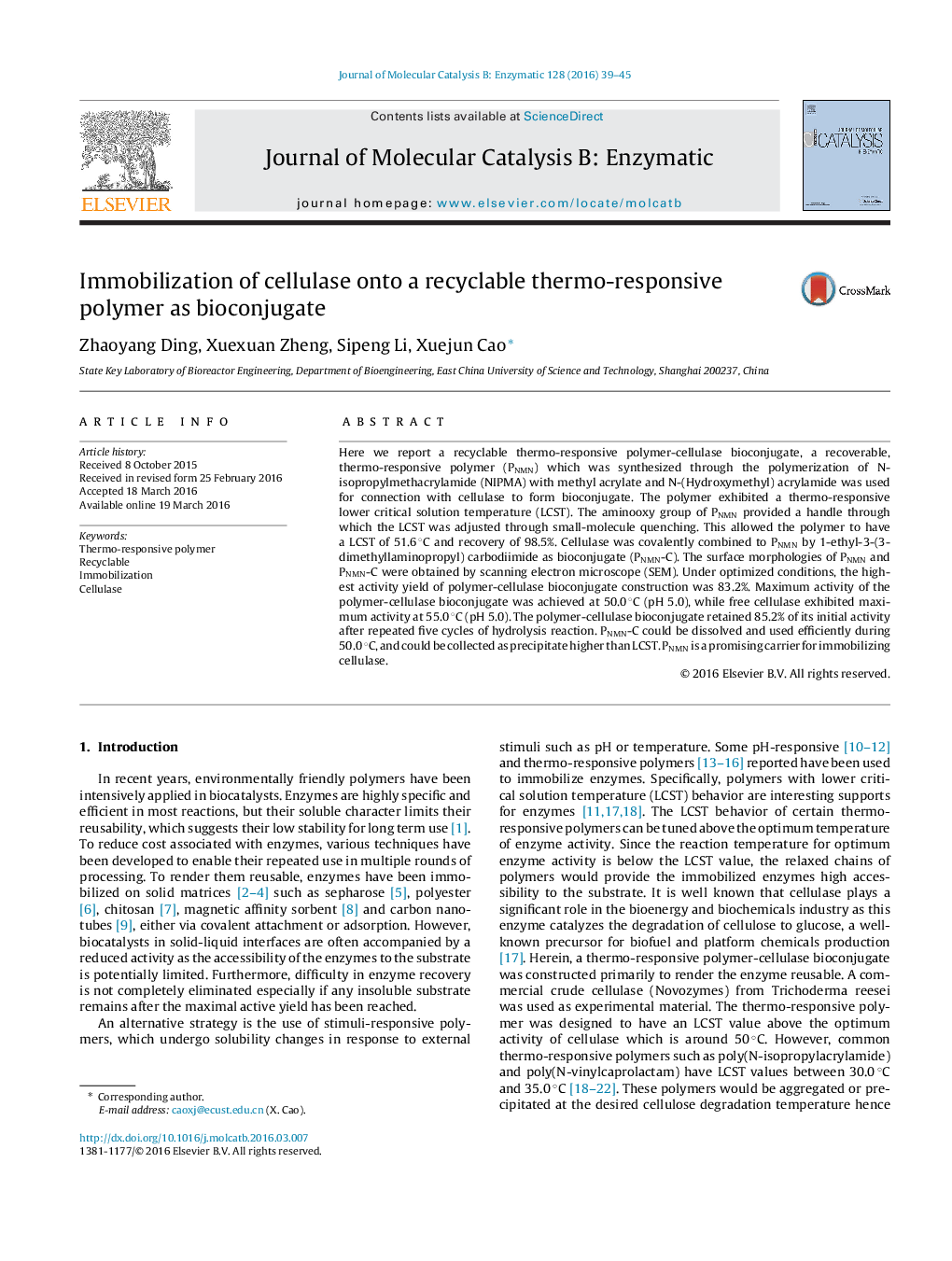| Article ID | Journal | Published Year | Pages | File Type |
|---|---|---|---|---|
| 69319 | Journal of Molecular Catalysis B: Enzymatic | 2016 | 7 Pages |
•Cellulase was immobilized on a recyclable thermo-responsive polymer as bioconjugate.•The polymer has a LCST of 51.6 °C and recovery of 98.5%.•The PNMN-C bioconjugate presented higher pH and thermal stability.•The PNMN-C bioconjugate retained 85.2% of its initial activity after repeated five cycles of hydrolysis reaction.
Here we report a recyclable thermo-responsive polymer-cellulase bioconjugate, a recoverable, thermo-responsive polymer (PNMN) which was synthesized through the polymerization of N-isopropylmethacrylamide (NIPMA) with methyl acrylate and N-(Hydroxymethyl) acrylamide was used for connection with cellulase to form bioconjugate. The polymer exhibited a thermo-responsive lower critical solution temperature (LCST). The aminooxy group of PNMN provided a handle through which the LCST was adjusted through small-molecule quenching. This allowed the polymer to have a LCST of 51.6 °C and recovery of 98.5%. Cellulase was covalently combined to PNMN by 1-ethyl-3-(3-dimethyllaminopropyl) carbodiimide as bioconjugate (PNMN-C). The surface morphologies of PNMN and PNMN-C were obtained by scanning electron microscope (SEM). Under optimized conditions, the highest activity yield of polymer-cellulase bioconjugate construction was 83.2%. Maximum activity of the polymer-cellulase bioconjugate was achieved at 50.0 °C (pH 5.0), while free cellulase exhibited maximum activity at 55.0 °C (pH 5.0). The polymer-cellulase bioconjugate retained 85.2% of its initial activity after repeated five cycles of hydrolysis reaction. PNMN-C could be dissolved and used efficiently during 50.0 °C, and could be collected as precipitate higher than LCST. PNMN is a promising carrier for immobilizing cellulase.
Graphical abstractFigure optionsDownload full-size imageDownload as PowerPoint slide
